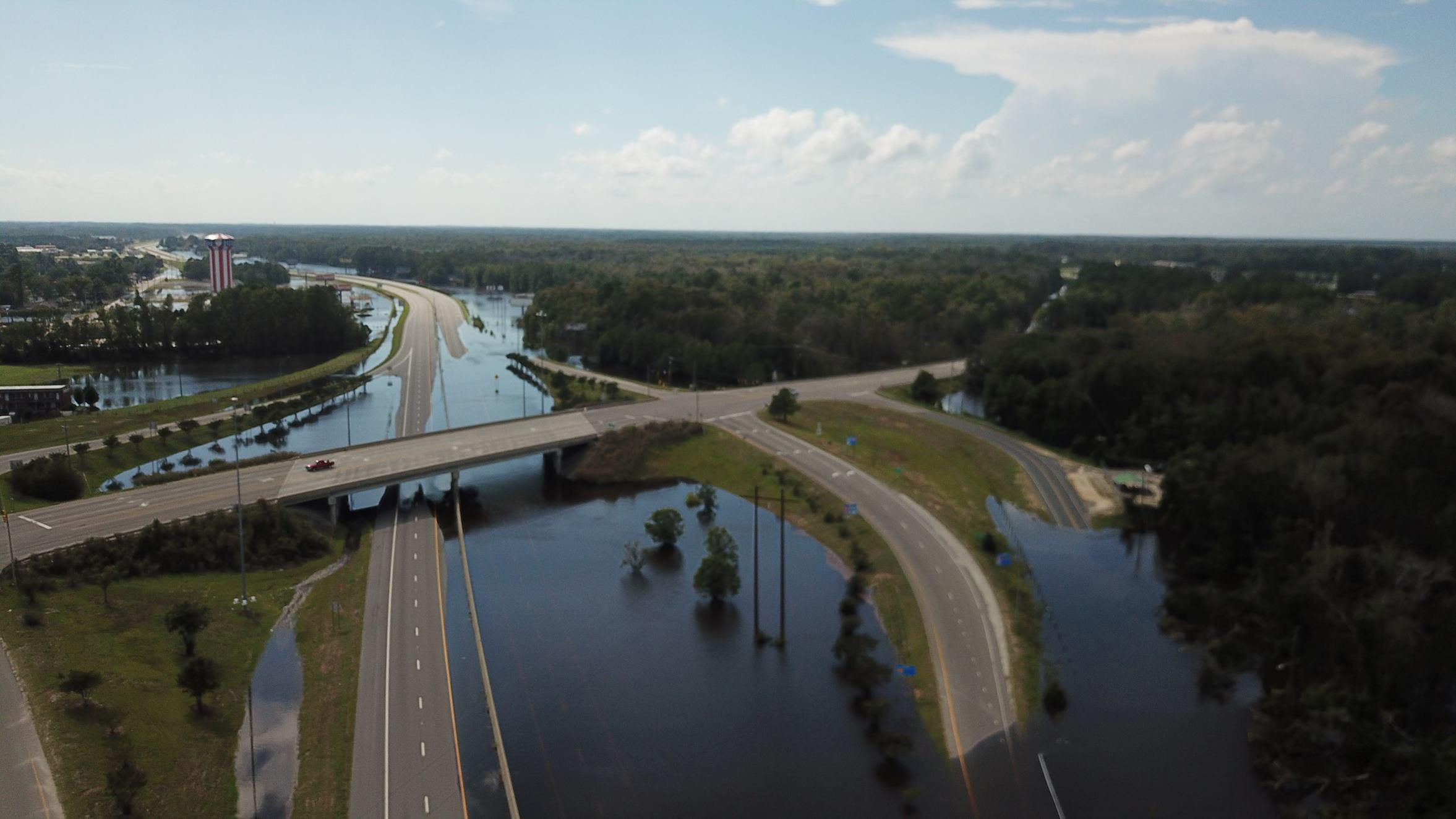
 Flooding on I-95 in Robeson County after Hurricane Florence (2018)
Flooding on I-95 in Robeson County after Hurricane Florence (2018)
The N.C. Department of Transportation, in line with its mission of connecting people, products and places safely and efficiently, is committed to building a transportation system designed around resilience and the ability to adapt and recover from a wide array of disruptions.
This means much more than maintaining open roads. It means clear rail lines, multi-modal transportation options, functioning airports and accessible ship and ferry ports.
As NCDOT plans for the future of the state’s transportation system, the department is incorporating resiliency work into policy development, planning and academic research to meet the everchanging needs of North Carolina.
What is Resilience?
The Federal Highway Administration defines resilience as the “ability to anticipate, prepare for and adapt to changing conditions and withstand, respond to and recover rapidly from disruptions.”
Resilience affects all aspects of transportation, from the designing and constructing infrastructure to withstand hurricanes or rockslides, to traffic operations during emergency events, to regular inspection and maintenance of existing networks.
What Does a Resilient North Carolina Mean?
A resilient North Carolina is a state where our communities, economies and ecosystems are better able to rebound positively adapt to and thrive amid changing conditions and challenges, including disasters and climate change. Where we maintain and improve quality of life, healthy growth, and durable systems, while conserving resources for present and future generations.
What is NCDOT’s Goal?
NCDOT's goal is to cooperatively plan, construct, operate and maintain a safe, efficient and resilient transportation network.
Learn More
NCDOT has always strived to provide a safe, efficient and resilient transportation network, even in the face of disruptions. In September 2021, NCDOT adopted an official resilience policy.
The recent formalization of resiliency efforts has emerged from a combination of federal and state guidelines, including North Carolina’s Executive Order 80.
To learn more about each of these guidelines, see the links below.
Federal Guidance
State Guidance